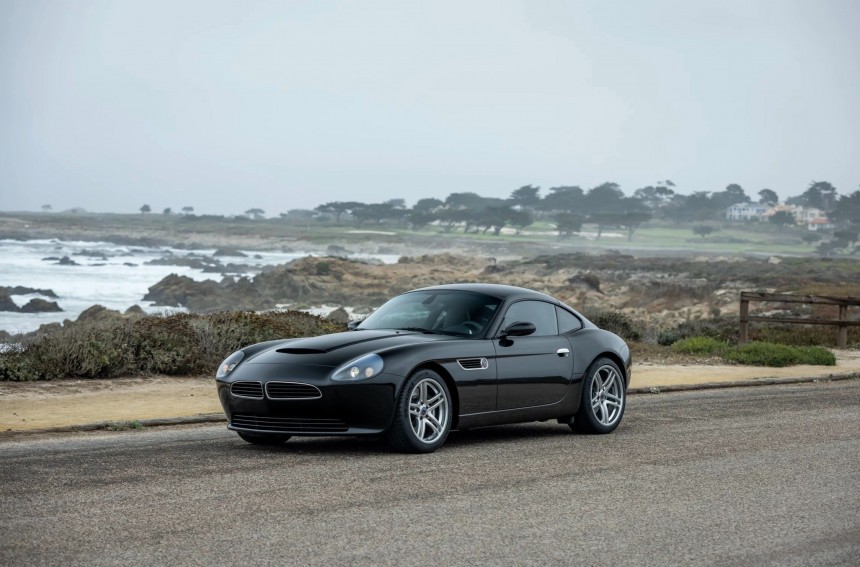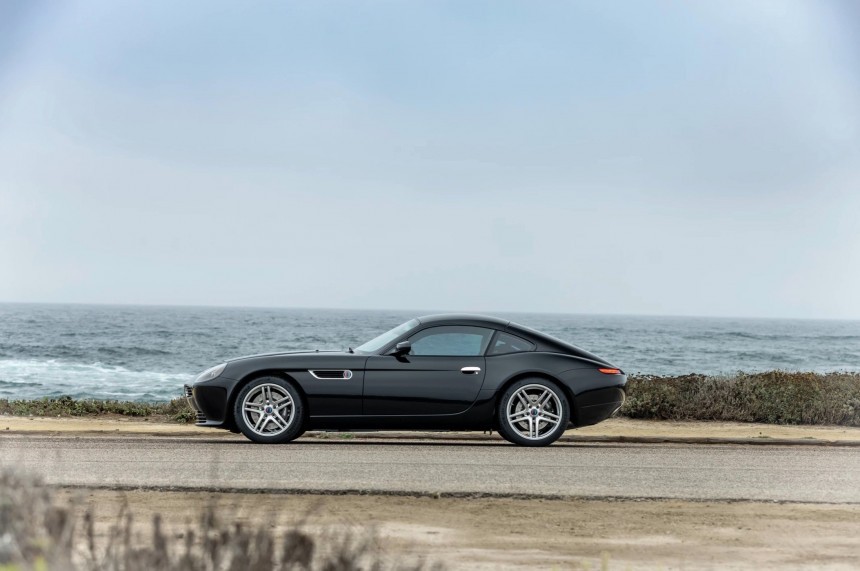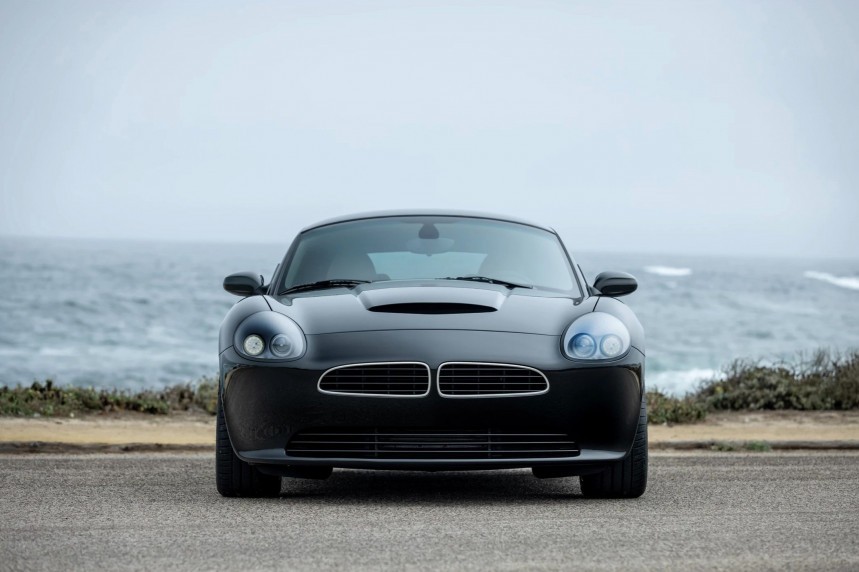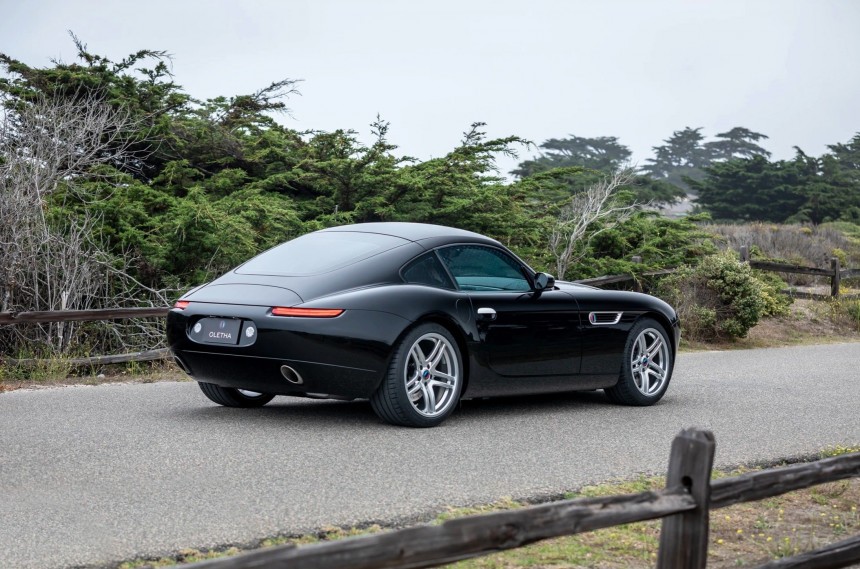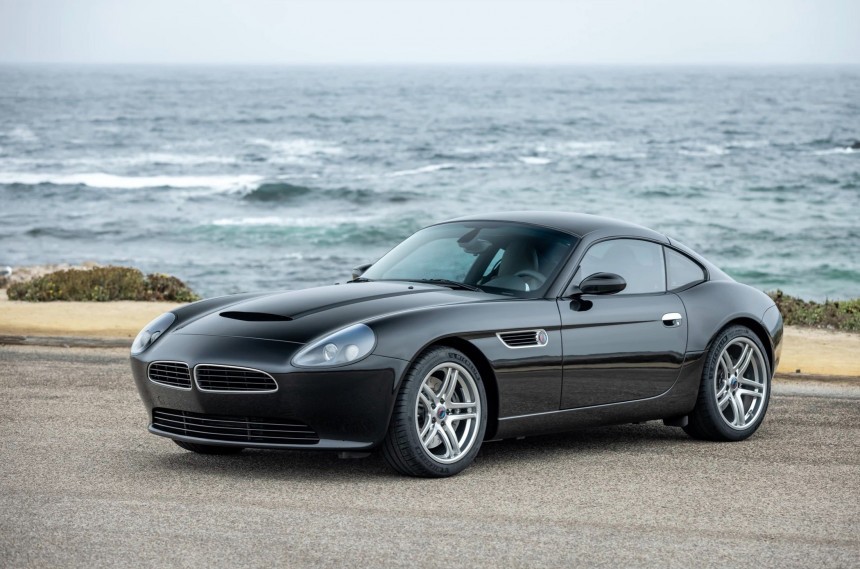With a total production run of just under 6,000 units and using a unique architecture not shared with any other BMW, the Z8 Roadster is likely to have caused a huge hole in BMW’s pockets.
That being said, we fail to think of another BMW this side of the similarly ill-fated M1 that has made so many people infatuated with the BMW brand in the last 50 years.
Penned by none other than Henrik Fisker - known for the ‘old-school revival’ era at Aston Martin in the early 2000s, or cars like the Fisker Karma and the upcoming Fisker Ocean electric SUV - the Z8 was a modern styling reinterpretation of the 1956 BMW 507, a similarly ill-fated but equally gorgeous roadster from Munich’s past.
The model was initially previewed by a concept car called the Z07, which had been showcased at the 1997 Tokyo Motor Show. The ‘7’ was chosen as a nod to its 507 forefather, the year of the decade it was unveiled in, and none other than James Bond.
As most movie buffs know, the resulting Z8 was a pretty large background character in ‘The World Is not Enough,’ a James bond film that actually preceded the model’s official launch by several months.
Because the car wasn’t actually ready for production at the time of filming, several rolling mock-ups and bespoke models were manufactured for filming purposes.
The funny part is that some of them were actually using Chevrolet Corvette underpinnings, which in a weird, contorted way, was another nod to the 1950s, when the BMW 507 roadster was absolutely slaughtered in sales and fame by the first-generation Corvette V8 roadster, the C1.
BMW certainly took its time with the Z8 project, having started development back in 1993, with pre-production prototypes running around testing as early as 1996.
Just like the Z07 Roadster and Z07 Coupe concepts previewed in '97, BMW was actually planning to offer both a roadster and an awesome-looking Z8 Coupe, with a gorgeous ‘double bubble’ roof, when the car finally went on sale.
Sadly, it was a wasted opportunity, as the decision was reversed by the time the development ended, even though each and every Z8 sold was offered with a removable metal hardtop, color-matched to the body and featuring a rear defroster for the glass windshield.
With a bespoke architecture based on an aluminum spaceframe, which no other BMW at the time was using or has used since, the Z8 was a very expensive car to develop and manufacture, so it’s likely that some bean counter pulled the plug on the Coupe version for fears of project costs rising even more.
Despite being mostly hand-built, the retro-looking roadster didn’t sport supercar pricing, with a well-equipped 7 Series of the time easily trumping it in sticker price.
That said, it is among the very few BMWs made in recent decades that has actually appreciated on the used-car market, a testament to how well received was and still is.
Even though it was a wasted opportunity to not also spawn a coupe version, you'd think that at least one reputable coachbuilder (of the very few remaining) would modify some of the built units to feature a hard top that’s integrated with the body.
Because of the aluminum spaceframe design, such a thing would be either close to impossible or too expensive to make it worthwhile, which is probably why two decades had to pass until we finally get to see someone do it.
That ‘someone’ is not Pininfarina or Zagato, but a small family establishment called the ‘Smit Vehicle Engineering,’ consisting of two brothers who both have backgrounds in engineering and manufacturing in a motley range of industries, including automotive, aerospace, energy and even defense.
Before starting their ‘coachbuilding’ company they did work for companies like General Electric, Tesla, Singer Vehicle Design, San Diego Composites and Applied Composites.
It is then somewhat of a surprise that the Oletha, as they call their astonishing Z8 Coupe, isn’t rocking a Tesla drivetrain under that fabulous body.
What is not a surprise is that the entire body is actually made from carbon fiber composites, with the team targeting a 1,402 kg (3,090 lbs) curb weight.
To put things into perspective, the roofless and mostly aluminum BMW Z8 Roadster weighed in at around 1,585 kg (3,494 lbs).
The Oletha is not only much lighter than the open-top car it is based on, but also offers a 30,000 Newton-meter/degree torsional rigidity, which is almost three times higher than that of a Z8.
Unveiled almost covertly at the 2021 Quail Lodge event a few weeks ago, the SVE Oletha differs in many other ways when compared to a Z8, not only in the addition of a carbon fiber body and a sleek hard-top integrated flush with the body.
The two seats can be either carbon-fiber composites or 8-way adjustable ‘touring’ ones, there are 3D-printed parts made out of metal, composites or plastics everywhere and behind the long hood sits a totally different engine than the original.
Instead of the 4.9-liter S62 V8 of the Z8, which was shared with the E39 M5, the Oletha is powered by one of its high-revving successors, the 4.4-liter S65 V8 found in the 2010 BMW M3 GTS.
Thanks to a carbon fiber composite intake manifold and a custom stainless-steel and Inconel exhaust, the powertrain is good for over 450 horsepower and has a sweet 8,500 rpm redline.
No acceleration or speed number have been revealed, but thanks to the lower weight and improved power it’s easy to guess that the Oletha is not exactly a slouch compared to the Z8, which wasn’t a slow car to begin with.
The power is sent to the rear wheels through a 6-speed manual with an H-pattern and a mechanical limited slip differential comprised of three clutches, with a 3.62:1 final drive ratio. For reference, the Z8’s Getrag six-speed had a 3.15:1 final drive ratio.
There is no word on pricing either, but Smit Vehicle Engineering says that the Oletha isn’t exactly a one-of, with all the specifications above being just a basic framework for each future bespoke build.
Prospective customers can specify a different choice of components, materials and colors, with SVE welcoming any special requests regarding design or even engineering.
Could this company become for old-school BMWs what Singer Vehicle Design is for air-cooled Porsche 911s or Mechatronik for older Mercedes-Benzes? We certainly believe so.
Penned by none other than Henrik Fisker - known for the ‘old-school revival’ era at Aston Martin in the early 2000s, or cars like the Fisker Karma and the upcoming Fisker Ocean electric SUV - the Z8 was a modern styling reinterpretation of the 1956 BMW 507, a similarly ill-fated but equally gorgeous roadster from Munich’s past.
The model was initially previewed by a concept car called the Z07, which had been showcased at the 1997 Tokyo Motor Show. The ‘7’ was chosen as a nod to its 507 forefather, the year of the decade it was unveiled in, and none other than James Bond.
As most movie buffs know, the resulting Z8 was a pretty large background character in ‘The World Is not Enough,’ a James bond film that actually preceded the model’s official launch by several months.
The funny part is that some of them were actually using Chevrolet Corvette underpinnings, which in a weird, contorted way, was another nod to the 1950s, when the BMW 507 roadster was absolutely slaughtered in sales and fame by the first-generation Corvette V8 roadster, the C1.
BMW certainly took its time with the Z8 project, having started development back in 1993, with pre-production prototypes running around testing as early as 1996.
Just like the Z07 Roadster and Z07 Coupe concepts previewed in '97, BMW was actually planning to offer both a roadster and an awesome-looking Z8 Coupe, with a gorgeous ‘double bubble’ roof, when the car finally went on sale.
Sadly, it was a wasted opportunity, as the decision was reversed by the time the development ended, even though each and every Z8 sold was offered with a removable metal hardtop, color-matched to the body and featuring a rear defroster for the glass windshield.
With a bespoke architecture based on an aluminum spaceframe, which no other BMW at the time was using or has used since, the Z8 was a very expensive car to develop and manufacture, so it’s likely that some bean counter pulled the plug on the Coupe version for fears of project costs rising even more.
That said, it is among the very few BMWs made in recent decades that has actually appreciated on the used-car market, a testament to how well received was and still is.
Even though it was a wasted opportunity to not also spawn a coupe version, you'd think that at least one reputable coachbuilder (of the very few remaining) would modify some of the built units to feature a hard top that’s integrated with the body.
Because of the aluminum spaceframe design, such a thing would be either close to impossible or too expensive to make it worthwhile, which is probably why two decades had to pass until we finally get to see someone do it.
That ‘someone’ is not Pininfarina or Zagato, but a small family establishment called the ‘Smit Vehicle Engineering,’ consisting of two brothers who both have backgrounds in engineering and manufacturing in a motley range of industries, including automotive, aerospace, energy and even defense.
It is then somewhat of a surprise that the Oletha, as they call their astonishing Z8 Coupe, isn’t rocking a Tesla drivetrain under that fabulous body.
What is not a surprise is that the entire body is actually made from carbon fiber composites, with the team targeting a 1,402 kg (3,090 lbs) curb weight.
To put things into perspective, the roofless and mostly aluminum BMW Z8 Roadster weighed in at around 1,585 kg (3,494 lbs).
The Oletha is not only much lighter than the open-top car it is based on, but also offers a 30,000 Newton-meter/degree torsional rigidity, which is almost three times higher than that of a Z8.
The two seats can be either carbon-fiber composites or 8-way adjustable ‘touring’ ones, there are 3D-printed parts made out of metal, composites or plastics everywhere and behind the long hood sits a totally different engine than the original.
Instead of the 4.9-liter S62 V8 of the Z8, which was shared with the E39 M5, the Oletha is powered by one of its high-revving successors, the 4.4-liter S65 V8 found in the 2010 BMW M3 GTS.
Thanks to a carbon fiber composite intake manifold and a custom stainless-steel and Inconel exhaust, the powertrain is good for over 450 horsepower and has a sweet 8,500 rpm redline.
The power is sent to the rear wheels through a 6-speed manual with an H-pattern and a mechanical limited slip differential comprised of three clutches, with a 3.62:1 final drive ratio. For reference, the Z8’s Getrag six-speed had a 3.15:1 final drive ratio.
There is no word on pricing either, but Smit Vehicle Engineering says that the Oletha isn’t exactly a one-of, with all the specifications above being just a basic framework for each future bespoke build.
Prospective customers can specify a different choice of components, materials and colors, with SVE welcoming any special requests regarding design or even engineering.
Could this company become for old-school BMWs what Singer Vehicle Design is for air-cooled Porsche 911s or Mechatronik for older Mercedes-Benzes? We certainly believe so.
















